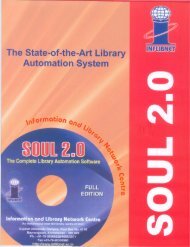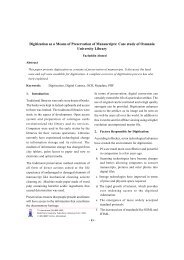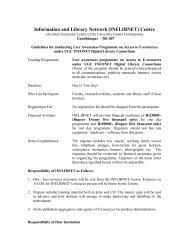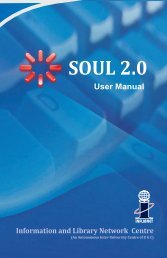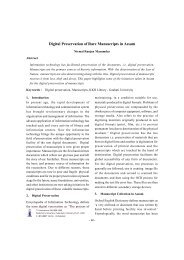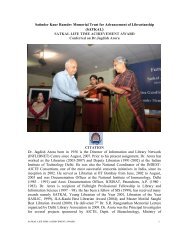Panjab University - INFLIBNET Centre
Panjab University - INFLIBNET Centre
Panjab University - INFLIBNET Centre
You also want an ePaper? Increase the reach of your titles
YUMPU automatically turns print PDFs into web optimized ePapers that Google loves.
76 M.A. POLITICAL SCIENCE (SEMESTER SYSTEM) SYLLABUS11. Davis, Horace B., Toward a Marxist Theory of Nationalism, Monthly Review Press, New York,1978.12. Lowy, Michael, 'Why Nationalism?' in Ralph Miliband and Leo Panitch (eds.), Socialist Register,The Marlin Press, London, 1993.13. Munck, R., The Difficult Dialogue, Marxism and Nationalism, Zed, London, 1986.14. Magdoff, Harry, 'Globalisation –To What End?' in Ralph Miliband and Leo Panitch (eds.), SocialistRegister, The Merlin Press, London, 1992.Option (e) : INTRODUCING FEDERALISMINSTRUCTIONS FOR THE PAPER-SETTERS AND CANDIDATES :(i)(ii)The theory question paper will be of 80 marks and 20 marks will be for internal assessment.For private candidates, who have not been assessed earlier for internal assessment, the marks securedby them in theory paper will proportionately be increased to maximum marks of the paper in lieu ofinternal assessment.The paper setter must put note (ii) in the question paper.The syllabus has been divided into four units.There shall be 9 questions in all. The first question is compulsory and shall be short answer typecontaining 15 short questions spread over the whole syllabus to be answered in about 25 to 30 words each.The candidates are required to attempt any 10 short answer type questions carrying 20 marks i.e. 2 marksfor each. Rest of the paper shall contain 4 units. Each unit shall have two questions, and the candidatesshall be given internal choice of attempting one question from each Unit – 4 in all. Each question will carry15 marks.Objectives : The paper introduces certain key concepts and issues in federalism. The aim of the paper is toenable the student to obtain a broad perspective on federalism in a comparative perspective and to evaluateits utility as a tool for accommodating diversity.Unit-IThe Essence of the Federal Idea.Core features of Federations.Models and variants of Federalism : Successive Waves.Presidential and Parliamentary variant.Unit-IIApproaches and Paths to Federalism.Institutionalist Explanations of Origins.Society-<strong>Centre</strong>d Theories.The William Riker- Alfred Stepan debate.Unit-IIIFederal Democracy and the Articulation of Diversity.Federalism as a device for accommodating groups and interests.Centralisation and Decentralisation in Federal Systems.Asymmetric Federalism : India and Canada.


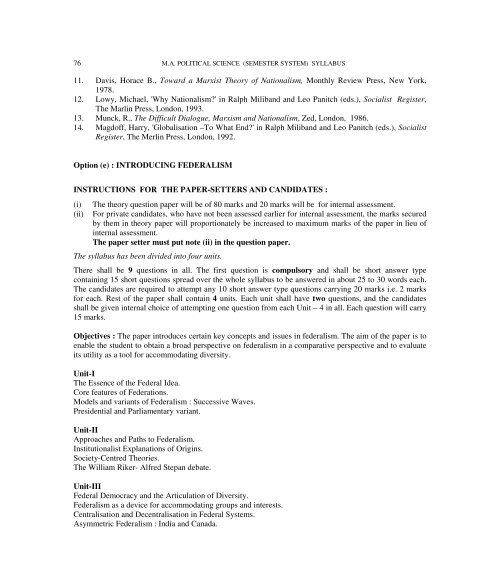
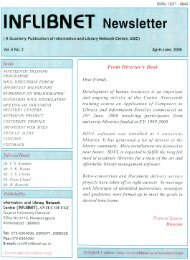


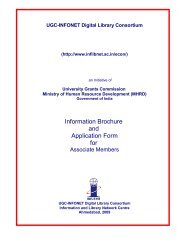
![Uni of Delhi_MA_History[1]. - INFLIBNET Centre](https://img.yumpu.com/48586372/1/190x245/uni-of-delhi-ma-history1-inflibnet-centre.jpg?quality=85)
